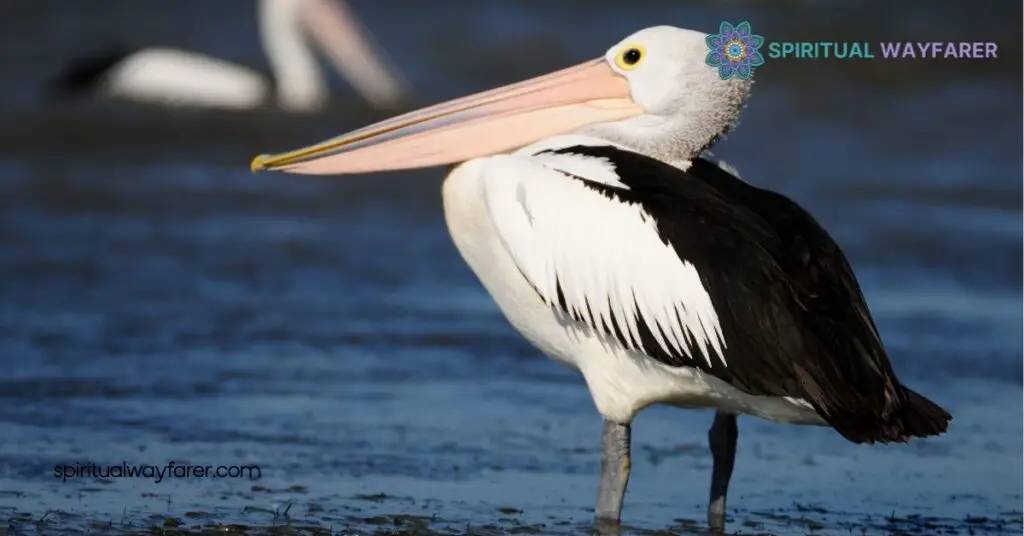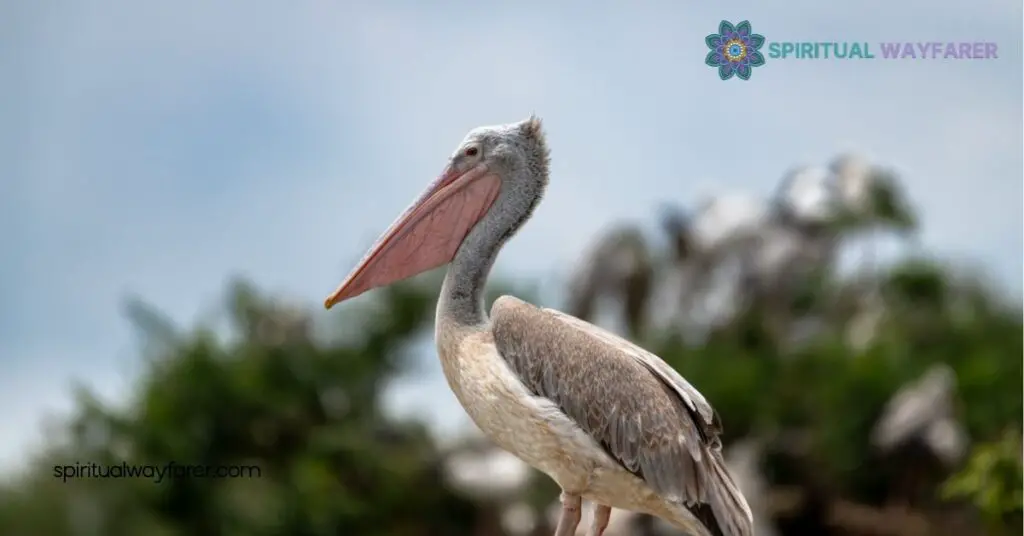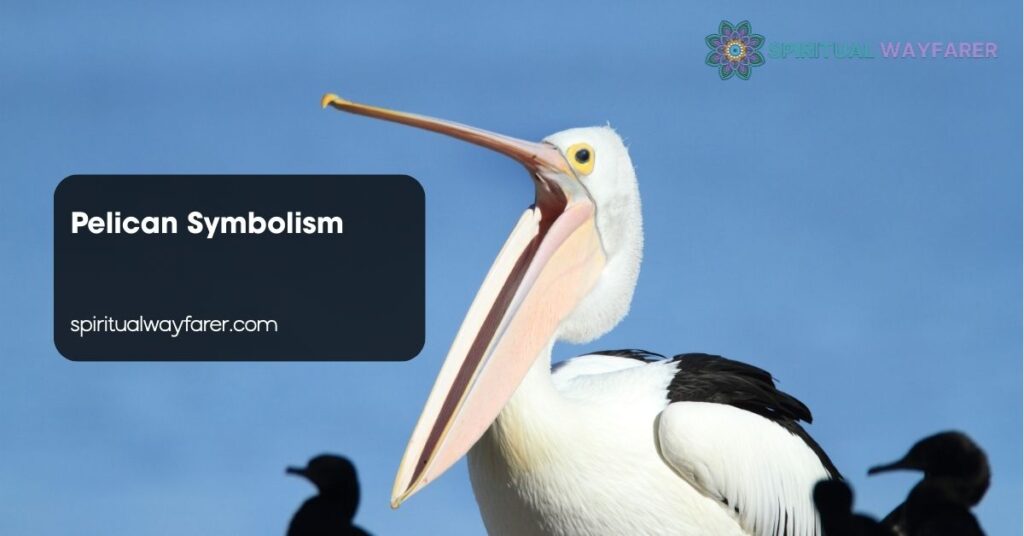Pelicans have long graced our myths and legends, embodying meanings that resonate across cultures. Their striking presence and graceful movements capture our imagination, inviting us to explore the deeper symbolism they hold.
From ancient tales to modern interpretations, pelicans symbolize self-sacrifice, protection, and renewal. As we investigate into the rich tapestry of pelican symbolism, we’ll uncover the layers of meaning that make these magnificent birds a powerful emblem in art, literature, and spirituality.
Join us as we journey through the intriguing area of pelican symbolism, discovering how these remarkable creatures continue to inspire and influence our understanding of the natural and the mystical.
Historical Symbolism

Pelicans have held important symbolic meanings throughout history, reflecting their unique characteristics and behaviors. Across different eras and cultures, these birds have embodied various themes and values.
Ancient Cultures
In ancient Egypt, pelicans symbolized motherhood and nourishment. Their image adorned temples and tombs, representing the nurturing aspect of the divine. The Greeks associated pelicans with self-sacrifice, believing that these birds pierced their own breasts to feed their young with their blood. This myth emphasized themes of sacrifice and renewal. Similarly, Roman art depicted pelicans as symbols of charity and maternal care, reinforcing their association with protection and sustenance. These ancient interpretations highlight the pelican’s role as a powerful emblem of life-giving and protective qualities.
Medieval Symbolism
During the medieval period, pelicans gained prominence in Christian symbolism. They represented Christ’s sacrifice and the Eucharist, drawing from the ancient belief of the pelican feeding its young with its blood. This imagery was frequently featured in church art, manuscripts, and heraldry, symbolizing redemption and eternal life. Also, pelicans appeared in medieval bestiaries, where they embodied themes of purity and selflessness. Their presence in religious and cultural contexts underscored the pelican’s enduring role as a symbol of faith and moral virtue.
Religious Symbolism

Pelicans embody important meanings across diverse religious traditions. We explore their symbolism in Christianity and other belief systems.
Christianity
In Christianity, the pelican stands as a powerful symbol of Christ’s sacrifice and love. Legends describe the pelican piercing its breast to feed its young with its blood, mirroring Jesus shedding his blood on the cross. This imagery originates from the early Christian text Physiologus, written between the 2nd and 4th centuries, which uses the pelican’s self-sacrifice as a metaphor for redemption. You’ll often find pelicans featured in Christian art, including stained glass windows, paintings, and heraldry, emphasizing their role in representing salvation and the Eucharist.
Other Religions
Beyond Christianity, pelicans hold various symbolic meanings in different cultures and religions. In ancient Egypt, they symbolize motherhood and nourishment, reflecting the bird’s nurturing nature. Greek mythology associates pelicans with self-sacrifice, believing the birds fed their young with their own blood. Roman art reinforces the pelican’s connection to charity and maternal care, highlighting themes of protection and life-giving qualities across these traditions.
Literary Symbolism

Pelicans have long been featured in literature, symbolizing various profound themes. Their representation spans across different genres and historical periods, enriching narratives with layered meanings.
Notable Works
We find pelicans prominently in medieval bestiaries, where they embody self-sacrifice and maternal care. In John Milton’s Paradise Lost, pelicans symbolize Christ’s sacrifice, aligning with Christian allegories. Also, William Blake’s illustrations often depict pelicans as guardians, reinforcing their role in literature as protectors and nurturers.
Interpretations
Pelican symbolism primarily represents selflessness and love in literary contexts. Authors use the pelican’s act of feeding its young with its blood to parallel Christ’s sacrifice, highlighting themes of redemption and salvation. Besides, pelicans signify purity and renewal, often appearing in stories that explore moral virtues and the cyclical nature of life. These interpretations deepen the emotional and spiritual resonance of literary works, making pelicans powerful symbols in storytelling.
Cultural Significance

Pelicans embody diverse cultural meanings, maintaining their symbolic presence across various societies and eras.
Modern Representations
Pelicans appear prominently in contemporary media and design, symbolizing protection and selflessness. Organizations like the Pelican Foundation use pelican imagery to promote marine conservation efforts. In literature and film, pelicans represent guardianship and resilience, often featuring in narratives that highlight environmental stewardship. Also, pelican motifs adorn modern architecture and fashion, reflecting their association with elegance and natural beauty.
Symbol in Heraldry
Heraldry frequently incorporates pelicans to denote charity and sacrifice. Many family crests and municipal coats of arms feature pelicans, emphasizing values of nurturing and protection. For example, the coat of arms of Lausanne displays a pelican feeding its young, symbolizing the city’s commitment to care and support. Heraldic pelicans are typically illustrated with vibrant colors and poised naturally, reinforcing their role as noble and compassionate symbols.
Conclusion
Pelicans stand as enduring symbols across cultures and eras reflecting themes of selflessness and protection. Their rich history in mythology and religion highlights their role as embodiments of sacrifice and renewal. We appreciate how pelican symbolism bridges the natural and spiritual worlds, offering profound insights into human values and beliefs. By exploring their presence in art, literature, and modern contexts, we recognize the pelican’s lasting impact as a powerful emblem of life and hope. Embracing their symbolism helps us connect with deeper meanings and fosters a greater appreciation for these magnificent birds in our cultural and spiritual landscapes.
Frequently Asked Questions
What is the significance of pelicans in various cultures?
Pelicans hold deep symbolic meanings across different cultures, representing themes like self-sacrifice, protection, and renewal. In ancient Egypt, they symbolized motherhood and nourishment, while the Greeks associated them with self-sacrifice. Roman art linked pelicans to charity and maternal care. In medieval Christian symbolism, pelicans embodied Christ’s sacrifice and purity. Today, they continue to be powerful emblems in art, literature, and spirituality, reflecting their enduring importance in both natural and mystical contexts.
How do pelicans symbolize self-sacrifice in mythology?
In mythology, pelicans are often depicted as symbols of self-sacrifice. The Greeks believed pelicans fed their young with their own blood, illustrating ultimate selflessness. This imagery was adopted by early Christians, where the pelican’s act mirrored Christ’s sacrifice for humanity. Such representations emphasize themes of love, protection, and renewal, making pelicans a profound emblem of altruism and moral virtue in various mythological and religious contexts.
What role do pelicans play in Christian symbolism?
In Christian symbolism, pelicans represent Christ’s sacrifice and love. Legends describe pelicans piercing their breasts to feed their young with their blood, paralleling Jesus shedding his blood on the cross for humanity’s salvation. Originating from the early Christian text Physiologus, this imagery underscores themes of redemption and eternal life. Pelicans are commonly featured in church art and bestiaries, embodying purity, selflessness, and the profound spiritual sacrifice central to Christian faith.
How are pelicans depicted in literature?
Pelicans are prominent symbols in literature, embodying themes of selflessness, love, and redemption. They appear in medieval bestiaries and classic works like John Milton’s Paradise Lost and William Blake’s illustrations, where they represent Christ’s sacrifice and serve as guardians. Their symbolism deepens the emotional and spiritual layers of literary narratives, highlighting themes of renewal and moral virtue. Pelicans enrich stories by providing a powerful emblem of life, faith, and protective instincts.
What is the importance of pelicans in heraldry?
In heraldry, pelicans denote charity and sacrifice. They are commonly featured in family crests and municipal coats of arms, symbolizing nurturing and protection. For example, the coat of arms of Lausanne displays a pelican feeding its young, representing the city’s commitment to care and support. Heraldic pelicans are typically illustrated with vibrant colors and poised naturally, reinforcing their role as noble and compassionate symbols in various heraldic traditions.
How are pelicans represented in modern culture?
In modern culture, pelicans symbolize protection and selflessness, appearing in media, design, and conservation efforts. Organizations like the Pelican Foundation promote marine conservation, while pelicans are featured in literature and film as symbols of guardianship and resilience. They also appear in architecture and fashion, reflecting their association with elegance and natural beauty. These representations highlight pelicans’ enduring relevance and their role in promoting environmental stewardship and aesthetic values.
What are the themes associated with pelicans in art and spirituality?
Pelicans in art and spirituality embody themes of self-sacrifice, protection, and renewal. They are depicted as nurturing and protective figures, often associated with divine love and moral virtues. In religious art, pelicans symbolize Christ’s sacrifice, while in broader spiritual contexts, they represent life’s cyclical nature and the renewal that follows sacrifice. These themes make pelicans a versatile and meaningful symbol in various artistic and spiritual traditions.
How did pelicans symbolize motherhood in ancient Egypt?
In ancient Egypt, pelicans symbolized motherhood and nourishment. They were revered for their nurturing behavior, which resonated with the Egyptian values of maternal care and sustenance. Pelicans featured in Egyptian art and mythology as guardians of families and providers of life, reflecting the society’s emphasis on the vital role of mothers. This symbolism contributed to the pelican’s broader representation of protection and selflessness in various cultural contexts.
Why are pelicans associated with environmental stewardship today?
Today, pelicans are associated with environmental stewardship due to their role in marine ecosystems and their symbolic representation of protection and care. Organizations like the Pelican Foundation use the pelican as a mascot to promote conservation efforts, highlighting the importance of preserving natural habitats. Pelicans’ resilience and adaptability also make them symbols of environmental resilience and sustainability, encouraging communities to engage in protecting wildlife and maintaining ecological balance.
In what ways do pelicans appear in modern architecture and fashion?
Pelicans appear in modern architecture and fashion as symbols of elegance and natural beauty. Architectural motifs often incorporate pelican designs in decorative elements, emphasizing grace and protection. In fashion, pelican patterns and imagery are used in clothing and accessories to convey sophistication and a connection to nature. These contemporary uses of pelican imagery reflect their enduring appeal and versatility as symbols of aesthetic value and harmonious design.







